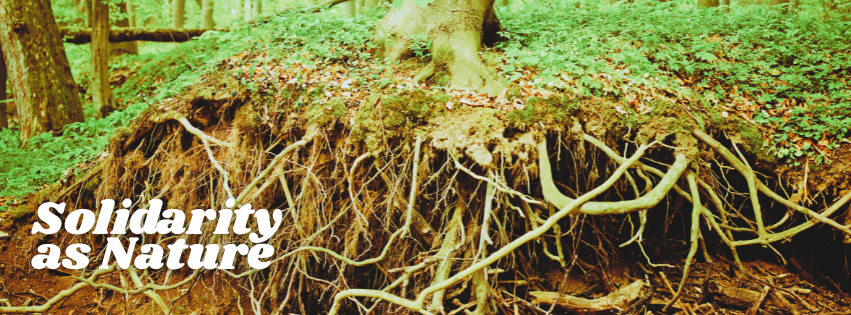What is Solidarity - Part 2: Solidarity as Nature

Solidarity is natural. Not simply natural as in a natural human experience, but natural as in it is nature. It is the natural social order. Solidarity is nature itself. The electromagnetic force that binds the protons, neutrons, and electrons together to form an atom that becomes what is known in settler-colonial science as molecules of matter is driven by an interdependent co-operation between those particles. These formed communities of atoms attract other atoms forming together to create chemical structures of nature. Out of these structures become genealogies of natural existence and evolution, fused by interdependent co-operation. Each existing entity is possible through solidarity and solidarity is the fundamental driving force of creation. Solidarity is the propulsive energy that creates matter. D’Arcy McNickle says “The magic of creation was always for a purpose.” in They Came Here First: The Epic of the American Indian when speaking on the beliefs and practices of the Huichol peoples. And indeed, when we view solidarity as the ignition for creation and evolution, we begin to discover pathways to solidarity not defined by civilization but by relationship, changing our understanding of solidarity in definition and practice.
McNickle calls Indigenous peoples “settlers” and it is not a definition of supremacy but of category. Solidarity as nature defines humanity as an evolution of nature. Our evolution is developed through our relationship with nature because we are nature. Humanity’s role in nature is that of settling the land, engaging in practices that maintain the harmony and natural balance of our collective interdependence.
The creature-becomingman was a wanderer from the beginning. He went northward and eastward to the Asiatic mainland and the offshore islands. He spread westward along both shores of the Mediterranean Sea and reached the Atlantic, where he polished his tools and improved his posture. As ice retreated in the north, and forest and grasslands emerged, another human stream flowed northward and eastward out of the European heartland. As hunters in pursuit of their foods, their lives remained uncomplicated, perhaps even reduced in cultural baggage, as the land in which they wandered increased in harshness and allowed no ease. The populations making up this last great trek would climax their lives and build their temples in another place and another age.
So it must have been.
….The long reach of the hemisphere from the Arctic to the Strait of Magellan is marked by at least eight major climatic zones, each of which presented challenges to human settlement. The mastering of these challenges occupied some thousands of years and brought about the widest variation in life-styles, economies, and efficiency in ecological adjustment. It was an experience calculated to develop a venturing, adaptable people, deeply attached to a responsive earth. Such a people, understandably, came to have a reverence for the land that subsisted and sheltered them.” (They Came Here First: The Epic of the American Indian, 1975)
In his chronicling of the history of Indigenous peoples, McNickle focuses Chapter 10: The Inner World on the beliefs and expressions of “these first settlers” (ibid):
…[they] explored the land, tried new things, and achieved a peace within themselves. They learned to live wherever they paused in their travels—in forest lands, on the prairies of tall grass, along coastal waters, on dry mesa tops. They tamed wild plants and brought them into use. They worked out rules of conduct which eased the tensions of living together.
In all that they attempted they seemed to be most deeply concerned with the moral quality of their relations with each other. They contrived no abstract ethics; they were not idealists. Rather they were constantly seeking a quality of life which was never at any point at variance with the force which created life. Men who thwarted their fellows or the understood rules were not forced back into line. It was not the practice “to put on any offender at any time the full penalty which the law makes possible.” Let the offender come back into line of his own volition, as a flooded stream in time slacks off. Repressive measures were used only when the individual in society could not or would not square himself with the rules; and then the measures taken were designed to localize the trouble and prevent its spreading.(ibid)
This “deep lying unity and integration” (ibid) between Indigenous humanity and nature grew into practices of art, spirituality, sciences, and more, as time moves on, always keeping true to the source of their quality of life: an interdependent co-operative relationship with Nature and all their children, including themselves. McNickle highlights examples from different Indigenous peoples, drawing parallels through time and space to the expressions and practices of this belief system that culminate in viewing the existence of humanity as a part of the interdependent co-operation of nature. This belief system, what the Nishnaabeg call “Kina Gchi Nishnaabeg-ogamig, the place where we live and work together. It’s a web of connections to each other, to the plant nations, the animal nations, the rivers and lakes, the cosmos, and our neighboring Indigenous nations.” (As We Have Always Done: Indigenous Freedom Through Radical Resistance, 2017)
Kina Gchi Nishnaabeg-ogamig is an ecology of intimacy. It is an ecology of relationships in the absence of coercion, hierarchy, or authoritarian power. Kina Gchi Nishnaabeg-ogamig is connectivity based on the sanctity of the land, the love we have for our families, our language, our way of life. It is relationships based in deep reciprocity, respect, noninterference, self-determination and freedom. (ibid)
D’Arcy accounts for this belief system of solidarity over and over:
- Regarding the decorative nature of the Huichol peoples: “Life was full of sacred things, and sacred things habitually were reduced to symbols. And these were woven into the fabric of life”. (They Came Here First: The Epic of the American Indian, 1975)
- The singing practices of the Papago peoples, quoting Ruth Underhill: “People sang in trouble, in danger, to cure the sick, to confound their enemies, and to make the crops grow. They sang, as they fought and as they worked, all together. This was a tiny, close-knit community, where the good of one was the good of all.” (ibid)
- About the blanket weaving and art of the Chilkat peoples: “It was not art alone which the Tlingit woman wove into her blanket, but a statement of belief which she conveyed to and shared with every living member of her tribe. She encompassed everything, as the concept of family encompassed everything.” (ibid)
- And finally, quoting a prayer of the Zuñi peoples:
My fathers,
Our sun father,
Our mothers,
Dawn
As you arise and come out to your'sacred place,
I pass you on your road.
The source of our flesh,
White corn,
Prayer meal,
Shell,
Pollen,
I offer to you. (ibid)
Indigenous stories globally reflect this belief system as well: multiple versions of The Three Sisters from different peoples of the Northeast Woodlands, the legend of the three grieving fathers from the Ojibwe, Ottawa and Potawatomi peoples, the Indigenous stories of the wild goose clan and the mountain goat. The South African oral traditions are tales of co-operation and lessons of what happens when the balance of nature is upset through selfishness. Nigerian parables teach the audience about the interactions of nature and the roles within nature, passed down through generations of storytellers and teachers. Stories and tales from East Africa and Zanzibar teach the audience about the co-operation and balance in animal and human relationships, or the friction of a lack of co-operation. West African lore teaches the audience of the dangers of selfishness and power dynamics within nature. The Inca story of Creation and prayers to Viracocha regal the audience with a story of harmony and connectivity. Bravery, selflessness, and the relationship of nature with itself is documented in the oral traditions of the Guaraní peoples in Paraguay and also in ancient Chinese and Japanese folklore. The indigenous Celtic mythology of the Three Sisters highlights the importance of land sovereignty, acceptance, and the relationship of the land with people. The tales of the White Wings and The Mice and the Elephant from India are stories of co-operative freedom and existence; in the Russian folktale of the Giant Turnip the audience is taught interdependent co-operation with nature and each other. The audience is taught of the balance of nature in the practice of the Quechua and Aymara peoples singing Arrorró, rhythmic lullabies and the Tukutú, a lullaby of the Guaraní peoples; the Aztec story of the Creation of Music teaches the audience how music is birthed from the rhythm and sounds of nature and all work harmoniously together. Bedouin peoples carry their relationship with the land in their own name, Arabic badawī بدوي, which translates to “desert dweller”.
The Arab does not know himself, or understand his unique qualities…, if he does not know that the way he lives has its roots in the desert. The tribal spirit, and proceeding from it, family solidarity, ambitions of group leadership, personal inclinations and disputes over access to authority and leadership - all these and other matters trace their origins back to the organization of the tribe and to the influence of Bedouin life. Likewise, many Arab customs and conventions originate in well known Bedouin traditions still followed today. Among these are issues of vengeance, honor, hospitality, boasting, derogation, generosity, the sanctity of the guest, chivalry and bravery…(source)
The whakapapa (genealogies) of the Māori peoples tell the histories of the constant cycle of nature and the Aboriginal Australian practice of Dreaming/Dreamtime is based in the philosophy of the interconnectedness of the universe and the relationships of nature and humanity.
The oldest known civilization, The Indus Valley Civilization (~8000 BCE), bears the marks of not simply an egalitarian society, but also the roots of Ayurvedic practice in rituals and medicine. Ayurveda itself is a traditional, Indigenous healing practice that integrates the body, mind, and spirit as one unit; each spark of existence is made up of the three doshas: Vata (movement & communication in the mind and body), Pitta (body & mind health), Kapha (balance, exercise, and stability of the mind & body). In the Pre-Hindu Vedic beliefs, each living thing has a unique mixture of these energies and finding peace, abundance, and stability resided in balancing the principles to exist in the liberated self. Ayurveda teaches how to bring your doshas into correct balance, where there is interdependent cooperation among all your cells and energies to exist as you, healed and whole. Only through the solidarity of your doshas can your liberation exist and that your individual liberation is a part of the collective liberation of nature in balance.
Across this planet we call Earth, the innateness of natural interdependency and co-operation is woven into our very first expressions of belief and practice. The examples laid out here are only a small fraction of what exists throughout human history, and unknown amounts of these expressions have been lost, but they all lead back to the same core value: equitable and interdependent mutually beneficial co-operation. This solidarity is not simply a practice, but a genetic tendency in nature itself to allow not just existence, but a thriving community. Simply put, solidarity is the DNA of the natural world. Indeed, in speaking of the beliefs and practices of the Zuñi people, Ruth Bunzel observes to them “All matter has its inseparable spiritual essence.” (They Came Here First: The Epic of the American Indian, 1975) This “spiritual essence” is that inherent energy of solidarity. It is clear that despite Hegel’s inferences, interdependent co-operation, this social order of voluntarily connected dependency, based on the force of solidarity, is intrinsically natural and that there is a deep awareness of our connectedness in humanity from the very beginnings of our memories.
